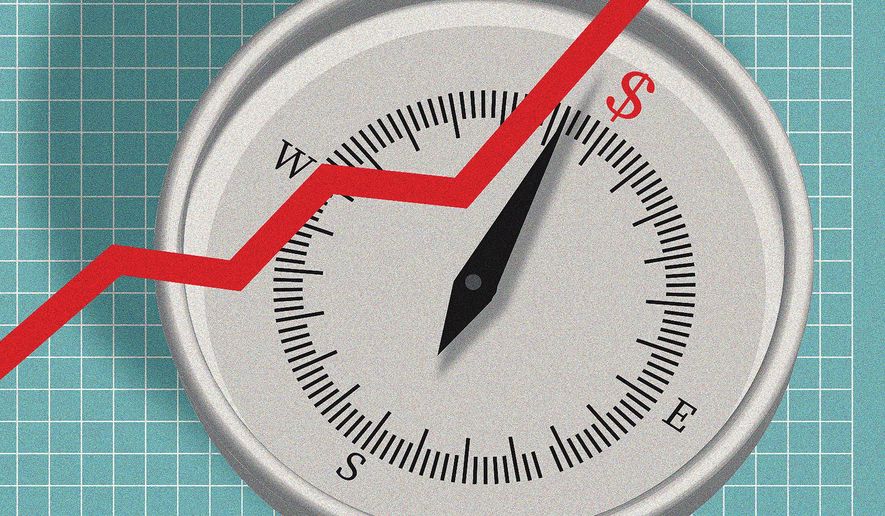OPINION:
Federal Reserve policymakers have been obsessed with when they may safely lower interest rates to avoid a recession without impeding the path to 2% inflation.
The consensus of the policymaking committee is that the federal funds rate — the overnight rate banks charge each other to borrow reserves — ultimately should fall to 2.6% from its current 5.33%.
That is considerably higher than what prevailed between the 2008 global financial crisis and the height of COVID-19, but it is still too low.
Demands on available savings are greater these days.
According to the Congressional Budget Office, the federal deficit will rise from 5.6% of gross domestic product this year to 6.1% in 2034. These estimates don’t consider the likely renewal of many expiring individual tax cuts in the 2017 Tax Cuts and Jobs Act and added defense spending to address growing security challenges.
The youngest baby boomers are now 60, and as they retire, they remove savings from tax-sheltered retirement accounts and run down pension fund balances.
Artificial intelligence requires enormous investment in software development, Nvidia’s expensive processors, data centers, and additions to the electrical grid.
Surging immigration is relieving labor supply constraints but requires more housing and doesn’t bring a lot of added capital.
Along with investments to transition to electric vehicles and an expanded and greener electrical grid, these forces tax available savings and push up interest rates.
Trend growth should be much higher than the 1.8% Fed policymakers assume.
AI will affect productivity and investment akin to the advent of the steam engine, transcontinental railway, electricity, automobile and computer.
Goldman Sachs optimistically estimates as much as a 1.5% annual boost to productivity growth.
More realistically, if we are not overzealous about suppressing inflation, the trend rate of growth should be closer to 2.8% than 1.8%.
Even the legendary Fed Chairman Paul Volcker managed only to get inflation down to about 3.8% the decade following his battle with the great inflation of the early 1980s.
Fed Chairman Jerome Powell has said he would tolerate periods above 2% to compensate for periods below 2% but little about the opposite.
Consumer expectations for five-year inflation, as surveyed by the University of Michigan and the New York Federal Reserve, are between 2.5% and 3%.
Assuming inflation will be above 2.5% rather than 2% seems reasonable.
The 10-year Treasury rate is a better gauge for the adequacy of interest rates because it provides the benchmark for business and consumer borrowing rates. As of this writing, it’s 4.7%.
The yield on high-quality corporate debt fluctuates between 0.7% and 1.5% above that rate. It’s trading close to 0.7%, anticipating that the Fed will cut the federal funds rate and increase the availability of funds across all markets.
A good estimate of where the 10-year Treasury rate should be is the sum of expected inflation and economic growth — that’s in the range of 5.5%.
Inflation and interest rates were historically low in the years between the financial crisis and the pandemic. Globalization kept goods prices down, and the Fed was able to support households and businesses in their recovery from the crisis.
In the 40 years before the 2008 crisis, average inflation was 4%, and the 10-year Treasury rate was 7.4%.
If the Fed persists in its impulse to push down rates before achieving 2% inflation, then the 3.5% consumer price index scored in March ultimately may not prove high.
Currently, the 30-year fixed rate is about 6.9%.
High mortgage rates are not what handicaps homebuyers and landlords. Rather, it’s barriers to building housing to accommodate an expanding population.
Those constraints are well known — restrictive zoning and NIMBY in and around large cities, rising material costs, and shortages of skilled workers when construction picks up.
Cheaper mortgages would do nothing to fix supply constraints but would increase demand and prices, leaving homebuyers no better off.
From 2009 to 2019, CPI inflation averaged 1.8%, but the S&P Case-Shiller Index of home prices for 20 major metro areas increased 4.2% annually.
Cheap credit props up businesses that should wind down. That ties up labor that would be better redeployed into new and expanding activities like electric vehicles, batteries, green energy and AI.
The harmful consequences of cheap money on healthy capital reallocation is likely one reason the International Monetary Fund study of more than 100 episodes across 56 countries found central banks that lowered interest rates too soon after battling inflation endured both a resurgence of inflation and slower growth over the longer term.
If the Fed wants healthy growth, it should let the 10-year Treasury drift up and abandon its obsession with lowering the federal funds rate to stave off a short recession.
Lower rates might put off a downturn, but they would harm the great transition to AI, which will channel workers from mundane to more creative tasks and impede the transition to a carbon-free economy.
• Peter Morici is an economist and emeritus business professor at the University of Maryland, and a national columnist.




Please read our comment policy before commenting.